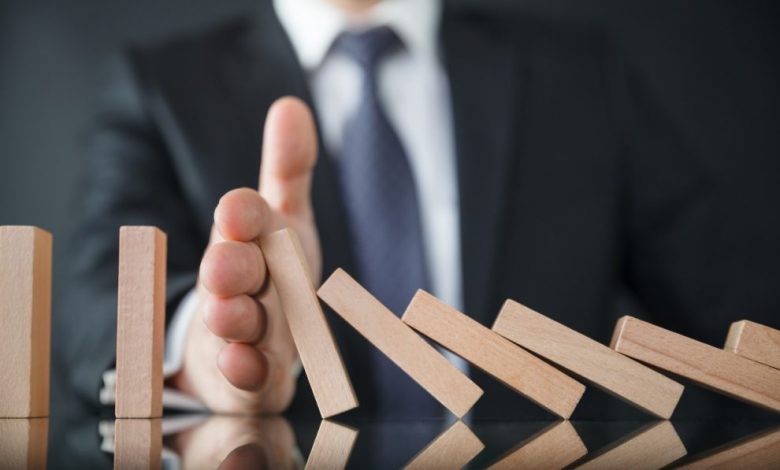Trading Math: Why you must avoid Losses at all costs

Successful investors like Warren Buffett do everything in their power to avoid losses if possible. There is a simple mathematical rule behind this: losses weigh more heavily than gains if you want to increase your capital in the long term.
For purely mathematical reasons, trading losses outweigh gains:
To illustrate this, imagine an investor with a initial trading account worth 10,000 USD. In the first year, the investor loses half of his money through wild speculation with leveraged products. The deposit account has therefore shrunk by 50 percent to 5,000 USD.
The second year on the markets now begins for the inexperienced investor with a portfolio of 5,000 USD. In order to reach the initial level again and to compensate for the loss of 50 percent, a return of 50 percent is no longer sufficient. No, he needs a return in the amount of his deposit volume, i.e. in the amount of 100 percent, in order to reach the initial level again.
The following table shows which percentage gain (right column) is necessary to compensate for the percentage loss mentioned in the left column.
| -10 % | +11,11 % |
| -20 % | +25 % |
| -30 % | +42,86 % |
| -40 % | +66,67 % |
| -50 % | +100 % |
| -60 % | +150 % |
| -70 % | +233,33 % |
| -80 % | +400 % |
| -90 % | +900 % |
| -100 % | ∞ |
When percentage losses are small, there is little difference between the percentage loss and the percentage gain necessary to regain the starting level. The opposite is true for large losses: The necessary price gain becomes dramatic when the loss of the initial capital exceeds 50% of the trading account, as can be seen from the table. It is therefore crucial to keep losses as small as possible from the beginning and not to risk a major drawdown in the trading account. Drawdown is a measure of capital loss, starting from the highest level of trading capital. If you lose 80 percent of your portfolio volume, you need a return of 400 percent in relation to the decimated portfolio in order to regain the starting level. And if you let your portfolio shrink to 0 USD, i.e. lose 100 percent of your portfolio volume, you will need an infinitely high return to reach the starting level again.
The mathematical truth described above may seem trivial, but successful investors probably always have it in mind. For example, star investor Warren Buffett’s two most important rules are:
Rule No.1: Never lose money.
Rule No.2: Never forget Rule No.1
Investors like Warren Buffett in particular, who want to benefit from exponential capital growth over the long term (compound interest effect), should avoid high percentage losses in relation to their overall portfolio whenever possible. In the case of Warren Buffett, of course, avoiding losses does not mean that he immediately sells in a panic when things get a little stormy on the stock markets. In fact, the investments of Buffett’s investment holding company Berkshire Hathaway have reached such a volume that this would not even be possible without putting additional pressure on prices. In the case of Buffett, loss prevention means that he carefully considers which stocks he invests in. In the case of active traders, loss avoidance means that they should calculate exactly what maximum risk they want to take with a particular trade and avoid large percentage losses in relation to the overall portfolio through appropriate risk and money management.
If you want to be successful in trading business, your most important capital is literally your capital. Anyone who recklessly puts his capital at risk cannot be a successful trader in the long term.
How to avoid losses with the 1% Strategy
It is advisable not to risk more than 1% of the trading capital in a single trade, because then even with a series of losing trades the total risk remains manageable. If a series of losing trades occurs, the trader can perform an in-depth error analysis without looking at a massive loss of capital in the trading account.
If you set a maximum loss per trade for yourself, the capital commitment can also be derived from this. In any trading setup, a price level can and should be identified in advance, at which the incoming position will be closed. In case the trade does not develop as expected. Once this price level is established, the range between the entry price and the maximum exit price can be determined. In addition, there is a fixed or percentage share for transaction costs and a share for slippage costs. The latter are the costs for the spread between the buy and sell price as well as for a worse than expected order execution.
The risk per trade is at your own discretion, even 2% of the capital can be risked with the appropriate overall market environment per trade. With a risk of 10% per trade, however, it quickly becomes dangerous. Just 4 losing trades in a row are enough to shrink the trading account by almost 35%. Subsequently, however, a profit of 52% is necessary to compensate for these losses. You also have to consider that there can be a gap in the entered position, which leads over the planned exit price. Such a gap then leads in any case to an additional loss not previously calculated.
To learn more about loss management and trading strategies, we highly recommend you to follow our social media and newsletter.
